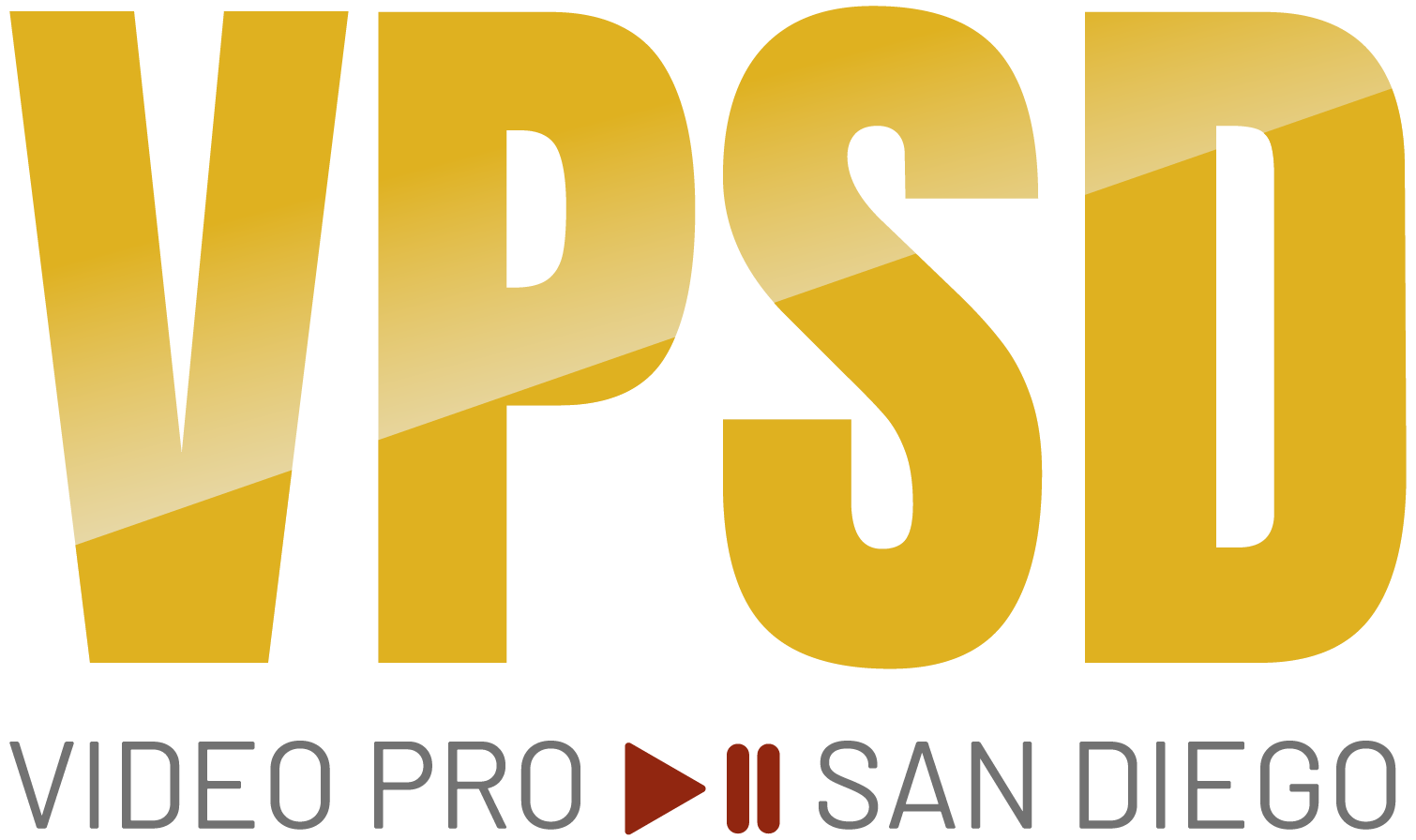Harnessing the Power of Visual Education for Employee Development and Organizational Success

Using Video to Support Continuous Learning in the Corporate Environment
Introduction
Continuous learning is the cornerstone of professional growth and development in the fast-paced corporate world. It refers to the ongoing process of acquiring new knowledge, skills, and competencies to adapt to the ever-evolving business landscape. In today's competitive environment, organizations that prioritize continuous learning gain a competitive edge by fostering a culture of innovation, creativity, and adaptability.
Video has emerged as a powerful tool for supporting continuous learning in the corporate setting. Its dynamic and engaging nature captivates learners, making complex concepts more accessible and enjoyable. Video enables organizations to deliver training content in a visually compelling manner, enhancing comprehension and retention among employees.
This article delves into the realm of video-based continuous learning, exploring its potential and effectiveness in the corporate environment. We will examine various aspects, from the definition and significance of continuous learning to the integration of video in learning programs. Additionally, we will discuss the evolving role of HR managers in facilitating video-based continuous learning and explore different types of video content that can be utilized.
Scope of the Article
In the subsequent sections, we will explore the following topics:
- The concept of continuous learning and its various components
- The role and importance of continuous learning in the corporate world
- The evolution of continuous learning in corporations, from traditional methods to digital approaches
- The impact of video on learning and its advantages compared to other learning mediums
- The growing popularity and acceptance of video learning in various settings, including corporations
- Different ways to incorporate video into continuous learning initiatives
- Case studies of successful video integration in corporate learning programs
- The challenges in video integration and how to overcome them
- The changing role of HR managers in employee development
- How HR managers can leverage video for learning in the workplace
- The positive effects of HR-managed video learning on employee performance
- Types of video content for continuous learning, such as instructional videos, webinars, and interactive videos
- Additional topics including cost-effectiveness, video analytics, fostering a video-based learning culture, legal and ethical considerations, and the future of video in continuous learning
The Concept of Continuous Learning in Corporations
What is Continuous Learning?
Continuous learning refers to the ongoing process of acquiring new knowledge, developing skills, and adapting to new challenges and opportunities in the corporate environment. It involves a commitment to personal and professional growth, enabling individuals to stay relevant, innovative, and competitive in their respective fields.
Why Continuous Learning is Essential in the Corporate World
Continuous learning plays a critical role in the contemporary corporate environment for several reasons:
- Skills Development: Continuous learning allows employees to acquire and develop new skills that are essential for their roles. It ensures that employees are equipped with the knowledge and capabilities to perform their tasks effectively.
- Adaptability: In a rapidly changing business landscape, continuous learning enables employees to adapt to new technologies, processes, and market trends. It ensures that organizations remain agile and responsive to external forces.
- Innovation: Continuous learning fosters a culture of innovation within organizations. By encouraging employees to explore new ideas and approaches, it promotes creativity, problem-solving, and the development of innovative solutions.
- Employee Engagement and Retention: Organizations that prioritize continuous learning create an environment that values employee growth and development. This, in turn, enhances employee engagement and satisfaction, leading to higher retention rates and reduced turnover.
- Staying Competitive: In a rapidly evolving business landscape, organizations that prioritize continuous learning gain a competitive advantage. They are better equipped to respond to market trends, customer needs, and disruptive forces, positioning themselves as industry leaders.
The Evolution of Continuous Learning in Corporations
Continuous learning in corporations has come a long way, evolving from traditional methods to digital approaches that leverage technology to enhance learning experiences.
In the past, continuous learning primarily relied on formal training programs, workshops, and conferences. While these methods still hold value, they often had limitations in terms of accessibility, scalability, and flexibility. The advent of digital technology has revolutionized the way organizations approach continuous learning.
Today, digital approaches such as e-learning platforms, online courses, and video-based learning have gained prominence. These digital tools provide learners with convenient access to learning materials, interactive content, and opportunities for self-paced learning. Video, in particular, has emerged as a powerful medium that enhances continuous learning by capturing attention, facilitating comprehension, and promoting engagement.
The Power of Video in Learning
The Impact of Video on Learning
Video has revolutionized the learning landscape, offering a dynamic and engaging medium for knowledge transfer. Numerous studies and research have consistently demonstrated the positive impact of video on learning outcomes.
Firstly, video aids learning by capturing and retaining attention. The visual and auditory elements of video content stimulate multiple senses, making the learning experience more immersive and memorable. Studies have shown that learners are more likely to retain information presented in video format compared to text-based materials.
Moreover, video facilitates the comprehension of complex concepts. By combining visual and verbal explanations, video provides a holistic understanding of the subject matter. It can break down intricate processes, demonstrate real-life examples, and present visualizations that enhance learners' understanding.
Furthermore, video promotes engagement and interactivity. With the availability of interactive video platforms, learners can actively participate in the learning process. They can pause, rewind, and review content at their own pace, allowing for personalized and self-directed learning experiences.
Additionally, video fosters emotional connection and empathy. Human faces, gestures, and storytelling elements in video content evoke emotions and create a sense of relatability. This emotional engagement enhances learners' motivation and willingness to explore and apply the knowledge gained.
Comparing Video to Other Learning Mediums
When compared to other learning mediums, video possesses several strengths that make it a highly effective tool for continuous learning in the corporate environment.
One of the significant strengths of video is its ability to convey visual information effectively. Visual cues, such as demonstrations, diagrams, and animations, can be seamlessly integrated into video content, enhancing comprehension and knowledge retention. This advantage over purely textual or audio-based mediums makes video particularly valuable for conveying complex concepts and practical skills.
Furthermore, video enables a consistent and standardized learning experience. With well-produced video content, organizations can ensure that the same message is delivered to every learner. This consistency is particularly important in corporate training, where uniformity and accuracy are vital.
However, it is important to acknowledge that video also has potential weaknesses. One such weakness is the potential for passive learning. Without interactive elements or active engagement from learners, video content alone may not facilitate deeper levels of understanding or application of knowledge. To address this limitation, organizations can incorporate interactive components, such as quizzes, assessments, or discussion forums, within the video-based learning experience.
Additionally, video production can be time-consuming and resource-intensive. Creating high-quality video content requires planning, scripting, filming, and editing. However, advancements in technology and the availability of user-friendly video creation tools have made the process more accessible and cost-effective.
The Growing Popularity of Video Learning
Video learning has gained significant popularity and acceptance in various settings, including corporations. The following statistical data and facts illustrate the widespread adoption and positive reception of video learning:
- According to a survey conducted by Wyzowl, 92% of marketers believe that video is an important part of their marketing strategy.
- Research by Forrester indicates that employees are 75% more likely to watch a video than to read documents, emails, or web articles.
- A study by Kaltura found that 97% of organizations believe video has a positive impact on employee training and development.
- LinkedIn's 2021 Workplace Learning Report states that 68% of employees prefer to learn at work by watching short videos.
- Video-based learning platforms, such as Udemy, Coursera, and LinkedIn Learning, have experienced significant growth in user engagement and course enrollments.
These statistics demonstrate the growing recognition of video as an effective and engaging learning medium. As corporations strive to create immersive and impactful learning experiences, the popularity of video learning is expected to continue rising.
Integration of Video in Continuous Learning Programs
Different Ways to Incorporate Video in Learning
When integrating video into continuous learning programs, organizations can employ various strategies and methods to enhance the effectiveness of their initiatives.
1. Microlearning Videos: Creating short, bite-sized videos that focus on specific topics allows learners to consume information in manageable chunks. These videos can be easily accessed and provide just-in-time learning opportunities, catering to the modern learners' preference for concise and targeted content.
2. Video Demonstrations and Simulations: Video can be used to showcase practical demonstrations and simulations, enabling learners to observe real-life scenarios and learn from experts in action. This approach is particularly effective in fields that require hands-on skills or complex processes.
3. Interactive Videos: Incorporating interactive elements within videos encourages active participation and engagement. Learners can interact with quizzes, clickable hotspots, or decision-based scenarios embedded in the video, promoting a more immersive and personalized learning experience.
4. Video Case Studies: Presenting real-world case studies in video format allows learners to analyze and apply theoretical knowledge to practical situations. Video case studies provide a context-rich learning experience, facilitating critical thinking and problem-solving skills development.
5. Live Webinars and Virtual Classrooms: Video technology enables the delivery of live webinars and virtual classrooms, where learners can engage in real-time discussions, ask questions, and interact with instructors and peers. This synchronous learning approach fosters collaboration and community building within the learning environment.
Role of HR Managers in Facilitating Video-based Continuous Learning
The Changing Role of HR in Employee Development
HR managers play a crucial role in facilitating video-based continuous learning within organizations. As the drivers of employee development and organizational growth, HR managers need to adapt to the changing landscape of learning and leverage video as a strategic tool. Here are some key aspects of their role:
How HR Managers Can Leverage Video for Learning
HR managers can leverage video in various ways to support continuous learning in the workplace:
1. Curating and Creating Video Content: HR managers can curate existing video content from reputable sources or create their own videos tailored to the specific learning needs of employees. They can collaborate with subject matter experts and instructional designers to develop engaging and informative video content.
2. Integrating Video into Learning Platforms: HR managers can integrate video content into learning management systems (LMS) or online learning platforms. This ensures that video resources are easily accessible to employees and seamlessly integrated into the overall learning experience.
3. Encouraging Employee-generated Videos: HR managers can empower employees to create their own video content to share their expertise, experiences, and best practices. This not only fosters a culture of knowledge sharing but also enhances employee engagement and ownership in the learning process.
4. Facilitating Video-based Discussions and Collaborations: HR managers can utilize video conferencing platforms to facilitate virtual discussions, brainstorming sessions, and collaborative learning experiences. Video enables remote employees to connect and engage in real-time, fostering a sense of community and collaboration.
5. Incorporating Video Assessments and Feedback: HR managers can leverage video for assessments and feedback. Video assessments can be used to evaluate practical skills or simulate real-life scenarios for learners to respond to. Video feedback provides a more personalized and detailed review of employee performance, enabling targeted improvement.
The Impact of HR-Managed Video Learning on Employee Performance
The adoption of video-based learning strategies managed by HR has shown positive effects on employee performance. Research and data have highlighted the following benefits:
- Increased Engagement: Video-based learning captures employees' attention and makes the learning experience more engaging. This heightened engagement leads to better knowledge retention and application in the workplace.
- Flexibility and Accessibility: Video learning allows employees to learn at their own pace and convenience, whether in the office, at home, or on the go. This flexibility promotes continuous learning and empowers employees to take ownership of their development.
- Improved Collaboration and Communication: Video-based discussions and collaborations facilitate effective knowledge sharing, idea exchange, and peer learning. Employees can connect with colleagues across locations and departments, fostering a collaborative learning culture.
- Enhanced Skills Acquisition: Video enables the demonstration of practical skills, allowing employees to observe and learn from experts in action. This practical application enhances skills acquisition and promotes mastery of job-related competencies.
- Real-time Performance Support: With video resources readily available, employees can access on-demand support whenever they encounter challenges or require clarification. This real-time support contributes to improved performance and productivity.
By leveraging video-based continuous learning, HR managers can drive employee performance, boost morale and job satisfaction, and contribute to the overall success of the organization.
Types of Video Content for Continuous Learning
Instructional Videos
Instructional videos are an essential component of video-based continuous learning. They provide step-by-step guidance, demonstrations, and explanations of processes or tasks. Instructional videos can be used to teach new skills, reinforce learning, or provide just-in-time support when employees need immediate assistance.
Webinars and Video Conferences
Webinars and video conferences enable real-time interactions and knowledge sharing among employees, regardless of their geographic location. They are particularly useful for virtual training sessions, workshops, or collaborative discussions. Webinars and video conferences promote active engagement, facilitate Q&A sessions, and create opportunities for networking and idea exchange.
Interactive Videos
Interactive videos offer an immersive and participatory learning experience. Learners can actively engage with the content by making choices, answering questions, or exploring different paths within the video. Interactive videos foster a sense of exploration, critical thinking, and decision-making, enhancing the overall learning process.
Conclusion
In conclusion, video has transformed the landscape of continuous learning in the corporate environment. Its dynamic and engaging nature captivates learners, enhances comprehension, and promotes active engagement. When compared to other learning mediums, video offers unique advantages in conveying complex concepts and providing a consistent learning experience.
The growing popularity and acceptance of video learning in various settings, including corporations, highlight its effectiveness and impact on learning outcomes. As organizations strive to create impactful and immersive learning experiences, video continues to play a pivotal role in their continuous learning initiatives.
By incorporating video into continuous learning programs, organizations can leverage its power to enhance knowledge acquisition, skill development, and employee engagement. HR managers have a crucial role to play in facilitating video-based continuous learning, from identifying learning needs to curating and creating relevant video content.
As technology continues to evolve, the future of video in continuous learning looks promising. Advancements in augmented reality (AR) and virtual reality (VR) can further enhance the immersive and interactive nature of video-based learning experiences. By embracing the potential of video and leveraging its strengths, organizations can empower their employees, foster a culture of continuous learning, and drive sustainable success in the corporate environment.
Using Video to Support Continuous Learning in the Corporate Environment
June 9, 2023
Company
All Rights Reserved | Video Pro San Diego | A division of GoBeRewarded Marketing Agency





